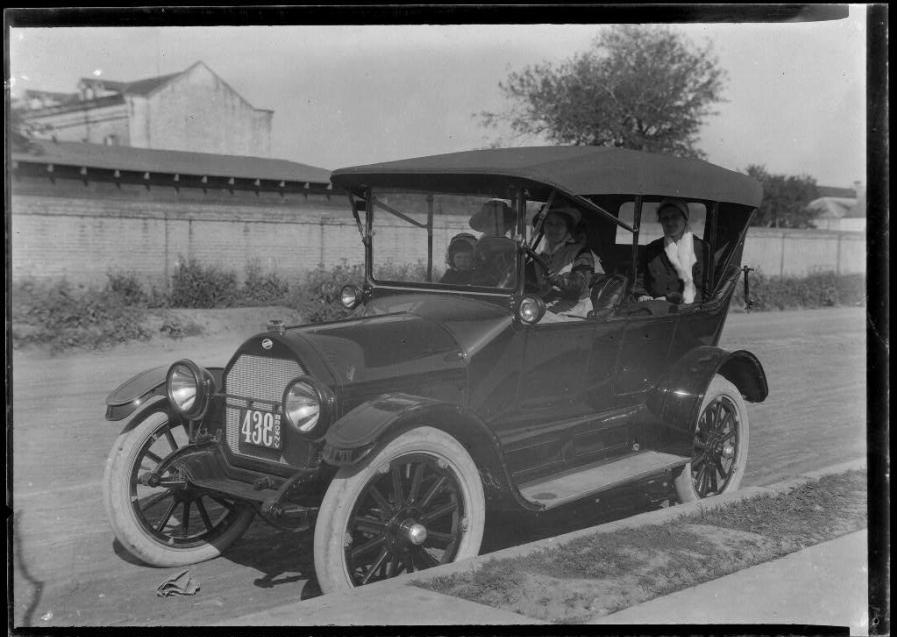Viral Consumption
archive

Viral Consumption
More than ever before, people are in motion. According to the World Tourism Organization (UNWTO), every year almost one billion people or one seventh of the world’s population are packing bags to travel.1 The most visited countries are France (76.8 million), the United States (59.75 million) and China (55.67 million). Europe accounts for about half of all visits and remains the favorite destination of international tourists while Asia is the fasted growing as a destination of choice.
An increasing number of these travelers fly. According to the Airports Council International, airlines carry more than five billion passengers annually. An estimated 158 people get on a plane every second. And while flying was a privilege of the few just four decades ago, since the 1990s it has become fairly routine for a majority of citizens of both open and authoritarian societies. Just a generation ago access to air travel and mobility were largely determined by class and cultural privilege. Now flying has opened to members of middle and even lower classes, where it is regarded as a status marker of their increasing importance in the global system, fueling their desire to represent themselves as well off through the “accessible luxury” of flying and the like. Not even the global financial crisis seems to have had much of a lasting impact, as the number of global travelers shot up by 45% between 2002 and 2012. This shift from “luxury for a few” to “normal for everybody” has brought flying into the imaginary of the good life for middle classes around the world.
With Ebola now on at least three continents, thoughts run to its origins. Discussion circulates around fruit bats, chimpanzees, and other primates, but no one really knows for sure where the disease’s reservoir might be, or what might serve as its vector. Perhaps what is most disturbing is that scapegoating has filled knowledge gaps left by uncertainty. Blame for the epidemic’s spread has fallen on its victims and those who have sought to provide relief in the struggle against the disease, as calls for quarantines and travel bans have targeted asymptomatic aid workers and Africans from unaffected countries alike. As a historian of medicine and public health, my inclination is to think about Ebola in the context of other emerging infectious diseases of the past, and in particular, to think about the ways in which large-scale forces have influenced disease emergence. Virtually every emerging disease in the past two centuries can be linked to transformations of the world’s economic landscape and their consequences for facilitating new exposures to pathogens. I want to draw attention here to three examples that shed some light on the complicated ways in which human agency and sickness intersect.

With some 25,000 new cases per year in the United States since 1995, Lyme disease is “the most commonly reported vector-borne disease in the country” according to the Centers for Disease Control and Prevention.1 If left untreated, the disease can cause lifelong illness and disability. Although medical descriptions that resemble Lyme disease date to the mid-eighteenth century, the disease emerged in epidemic form with a cluster of cases in New England in the 1970s. Changes in land use were critical to its emergence.2 The abandonment of farmland in New England led to reforestation, providing expansive habitat for deer and other hosts of the ticks that carry the disease. By the 1970s, suburban development in these same areas brought people into constant and close contact with these hosts as their gardens proved irresistible to deer and their garbage provided a constant food source for mice who carry infected ticks. The elimination of large predators has boosted the numbers of these species, while forest fragmentation—a consequence of surburbanization—has brought them ever closer to vulnerable humans.
Lyme disease is not the only illness associated with rising class status and increasing consumption. An epidemic of perhaps the most feared disease in all of human history was also linked to the expanding spending power of the middle classes in the early twentieth century. Bubonic plague re-emerged in the late nineteenth century and spread to many of the world’s ports in the following decades. The pandemic killed more than ten million people worldwide, primarily in India and China, but with significant outbreaks in Africa, Latin America, the United States, and Europe. The disease exploited networks of colonial commerce, moving from China to Hong Kong to Bombay, from Cape Town to Dakar to Oran, from San Francisco to Lisbon to Paris. The goods of empire that could be found in every middle-class home in Europe came across the seas on ships laden with cargo, but also with infected rats.

A sketch of a Manchurian marmot, 1914. The animals are a known reservoir of bubonic plague.
Source
The outbreak in Manchuria in 1910 and 1911 provides a textbook example. Plague is primarily a disease of rodents, with occasional outbreaks in humans. For centuries, marmot hunting provided a critical source of protein and fur in the region. Yet locals had also long recognized the dangers associated with hunting the large rodents: they knew in particular to avoid sick or dead animals. But a technological innovation far away transformed this practice. The development of new chemicals in Europe allowed for the dyeing of marmot fur to match far more expensive sable, mink, and otter. The ability to produce these inexpensive imitations dramatically boosted the market for marmot pelts. In some European markets, imports of the fur thus increased four-hundred-fold in the early twentieth century.3 The new demand resulted in a significant influx of migrants from other regions in China, who discovered they could make more in a few months of hunting than they could in a year of farming. The new hunters, however, ignored local knowledge, and harvested sick and dying marmots as easy prey.
The outbreak of plague in 1910 exploited this new contact zone between the bacillus and people, killing nearly 60,000 in less than a year.
Perhaps the greatest public health catastrophe in modern history also has close links to a changing ecology of consumption. HIV/AIDS has now claimed nearly 40 million lives, primarily in developing countries. Although the disease first made headlines when it appeared in the United States and Europe in 1981, subsequent research has indicated that the virus first jumped from lower primates into humans in the early twentieth century in equatorial Africa. Primatologists and molecular biologists [iv] have advanced the “cut hunter” hypothesis, arguing that injuries incurred in hunting chimpanzees and other primates may have provided an opportunity for the virus’s species jump.

A Model T Ford in Texas, c. 1920. The automotive revolution of the early twentieth century dramatically in creased the global demand for rubber.
Source: Robert Runyon Photograph Collection, courtesy ofThe Center for American History, University of Texas at Austin.
Perhaps the greatest public health catastrophe in modern history also has close links to a changing ecology of consumption. HIV/AIDS has now claimed nearly 40 million lives, primarily in developing countries. Although the disease first made headlines when it appeared in the United States and Europe in 1981, subsequent research has indicated that the virus first jumped from lower primates into humans in the early twentieth century in equatorial Africa. Primatologists and molecular biologists [iv] have advanced the “cut hunter” hypothesis, arguing that injuries incurred in hunting chimpanzees and other primates may have provided an opportunity for the virus’s species jump.
What scientists have been less clear about is the role played by global consumption in this series of new contacts. If the timing is correct, this introduction coincided exactly with not only the New Imperialism of the late nineteenth and early twentieth centuries, but also with a second industrial revolution that fed the desires of a growing consumer class around the world. One of the engines of that consumption was the increasing drive to tap sources of the rubber that made tires for automobiles, bicycles, and carriages; insulation for telegraph and electrical wires; and waterproofing for thousands of applications. Rubber was the backbone of the early twentieth-century economy, and the passion to harvest wild rubber in the tropics influenced brutal colonial policies.5 West and central Africa were critical sites in the exploitation of wild rubber, with France and Belgium leading the way. Concession companies drove harvesters—many kidnapped and forced into labor thousands of miles from their homes—deep into forests to fill ever-increasing quotas for rubber. Penalties for missing these quotas included torture and death. Surely this new ecology of labor changed human and primate interactions by raising the demand for food among both rubber harvesters and their masters alike—indeed, no one has ever specified whether the “cut hunter” was African or European in origin.
It would be a mistake to place blame for the origins of AIDS with a French peasant buying a bicycle in the 1920s. It would also be a mistake to say that a German burgher purchasing a knock-off sable hat a decade earlier was culpable in the deaths of a thousand Manchurians by plague. And the residents of a new subdivision in Connecticut didn’t deserve to see their children suffer from fevers and intense joint pain as the consequence of tick bites in their back yards. But in an era in which we see a great deal of blame placed on those suffering most intently from horrifying diseases, attention to the role of global consumption in changing the landscape of infection can be a useful exercise. Microbes are a biological phenomenon that connects all of us in a globalized world. But in a global economy that dates at least to the Columbian voyages—themselves conducted in pursuit of goods to be sold in a vast marketplace, and responsible for the introduction of smallpox and measles to the Americas, with an untold death toll6—we must also recognize that it is sometimes the changing demand for goods that connects not only economic markets, but microbial ones as well.
1 “Lyme Disease Data.” Centers for Disease Control and Protection. http://www.cdc.gov/lyme/stats/index.html. Retrieved 26 October 2014.
2 Jonathan A. Patz, et al. “Unhealthy Landscapes: Policy Recommendations on Land Use Change and Infectious Disease Emergence.” Environmental Health Perspectives 112.10 (July 2004): http://www.ncbi.nlm.nih.gov/pmc/articles/PMC1247383/. Retrieved 26 October 2014.
3 William C. Summers. The Great Manchurian Plague of 1910-1911. The Geopolitics of an Epidemic Disease. New Haven & London: Yale University Press: 2012.
4 R.A. Weiss & R.W. Wrangham. “From Pan to pandemic.” Nature 397 (February 4, 1999): 385-6.
5 Adam Hochschild. King Leopold’s Ghost: A Study of Greed, Terror, and Heroism in Colonial Africa. New York: Houghton Mifflin, 1999.
6 Alfred W. Crosby, Jr. The Columbian Exchange: Biological and Cultural Consequences of 1492. Westport, CT: Praeger, 2003.



